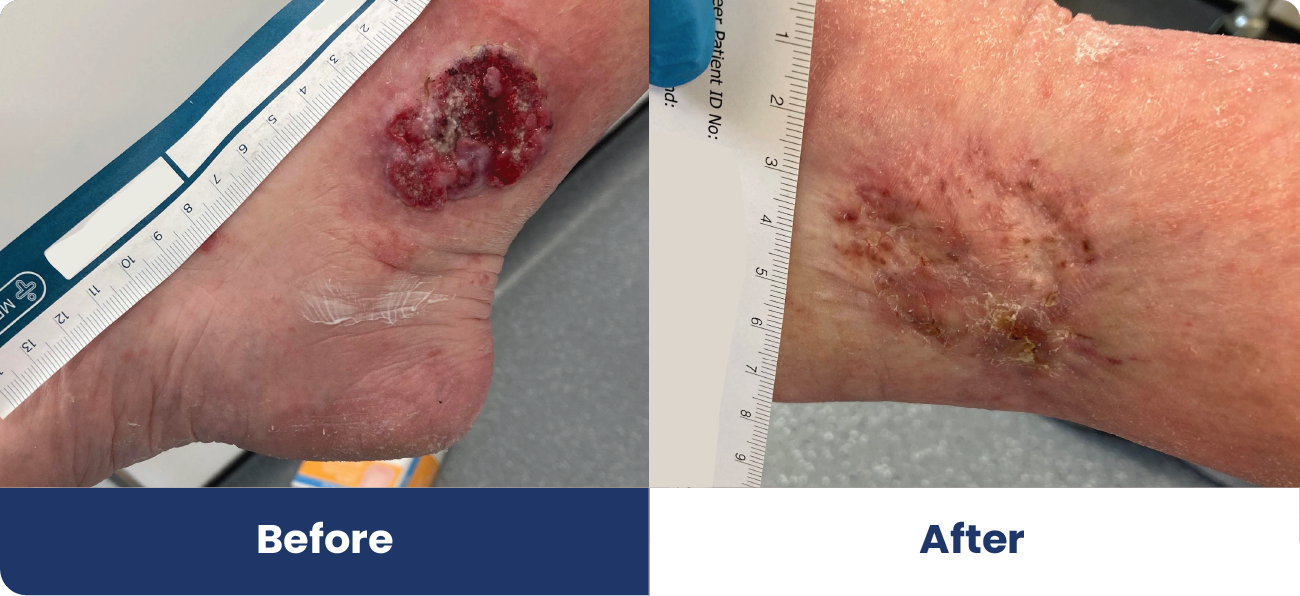
Leg Ulcer
 Leg Ulcer
Leg Ulcer
Leg ulcers are open sores or wounds that develop on the legs, typically occurring when the skin breaks down and fails to heal properly. These ulcers can be painful and often become chronic and will not heal if not treated effectively. Most commonly found just above the ankles, leg ulcers can vary in severity and are usually a sign of underlying health issues that need to be addressed.
The most frequent cause of leg ulcers is poor circulation, particularly due to conditions like chronic venous insufficiency, where the veins in the legs fail to return blood efficiently to the heart. Other causes include arterial disease, problems with the lymphatic system, diabetes, and prolonged pressure on the skin, which can lead to skin breakdown.
Condition and Treatment:
Leg ulcers can significantly impact a person’s quality of life, causing discomfort, swelling, and increasing the risk of serious infections. Proper treatment involves not only caring for the wound itself but also treating the underlying cause to prevent it coming back once healed. This may include removal of any dead tissue, compression therapy, medications, and lifestyle changes.
Whether you or a loved one is dealing with a non-healing wound or persistent swelling we’re here to help.

FAQs
- Pain
- Itching
- Swelling
- Discoloration or hardened skin around the ulcer
- Discharge of fluid from the skin (exudate)
A leg ulcer is a wound on the leg that has not shown significant signs of healing in 2 weeks. They usually appear on the inside of the leg, above the ankle.
Leg ulcers are caused by sustained venous hypertension (high blood pressure in the legs), which can be due to chronic venous insufficiency (faulty veins). This can happen when the veins in the legs don't pump blood back to the heart properly and this can happen due to age, occupation or pregnancy.

“The team at Pioneer were great and saw me very quickly – John and Claire made me feel at ease right away and I felt reassured that I’d be taken good care of. I have been having regular visits to the clinic ever since and, although my leg is taking far longer than I could have expected to recover, I am happy that I’m in safe hands.”


